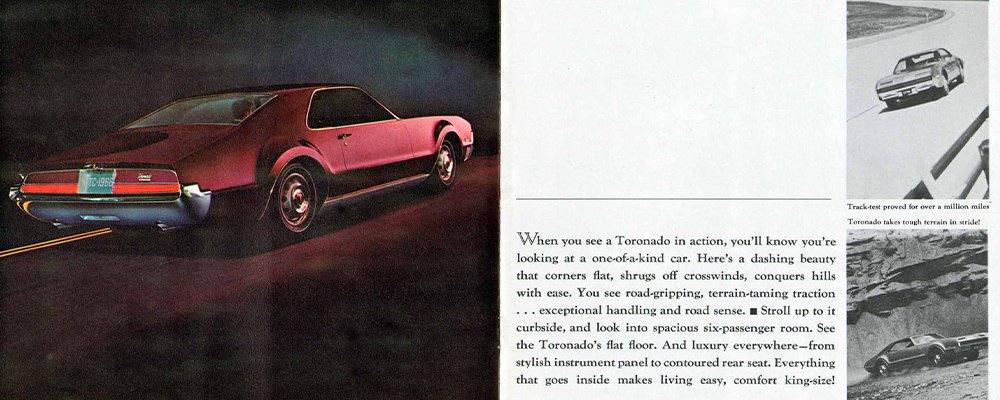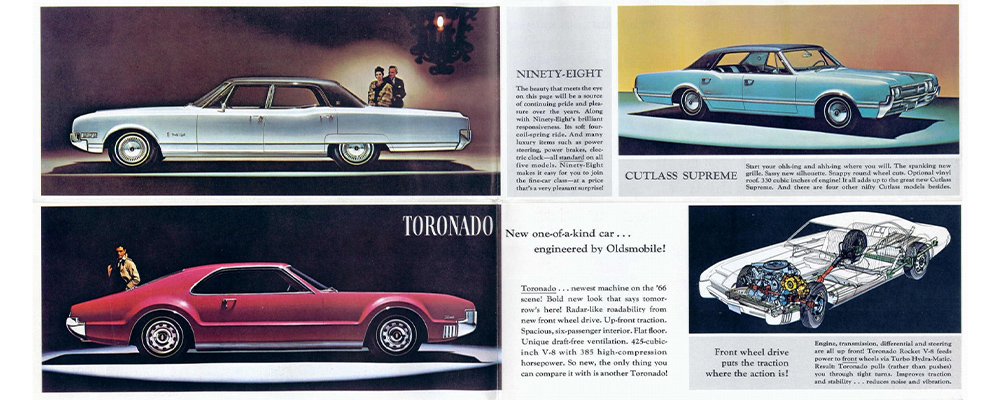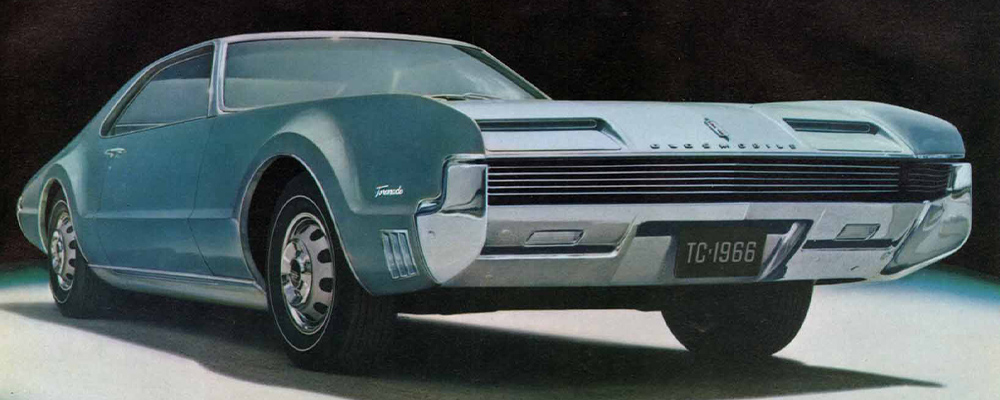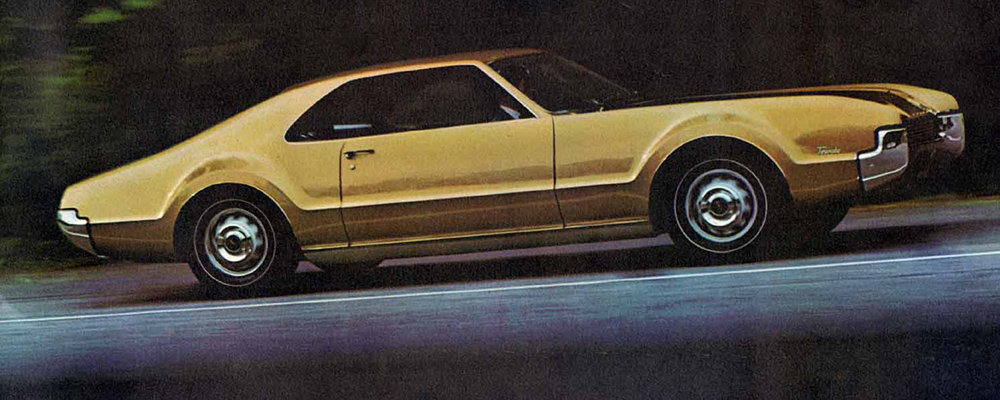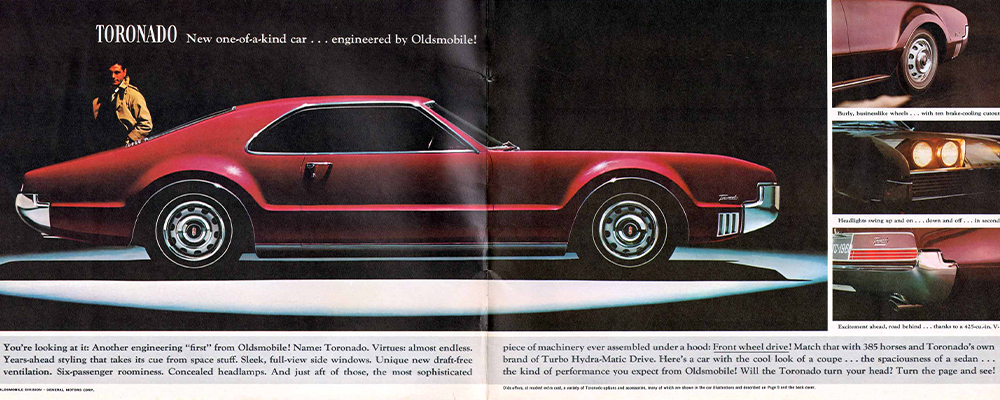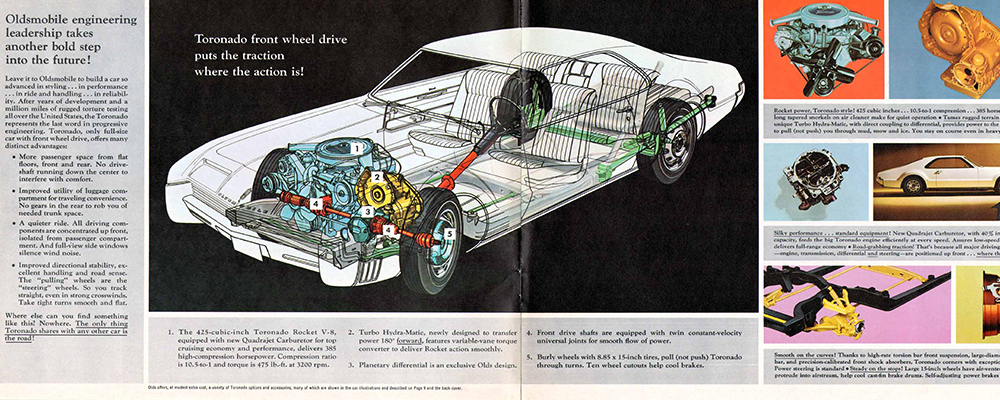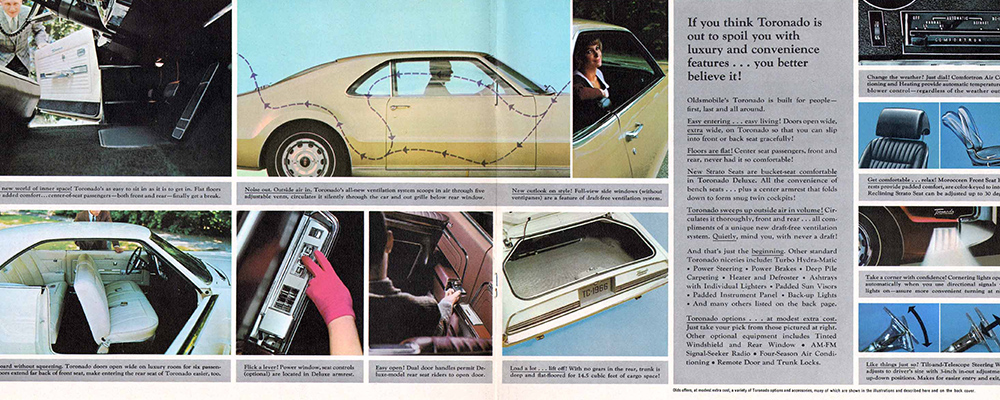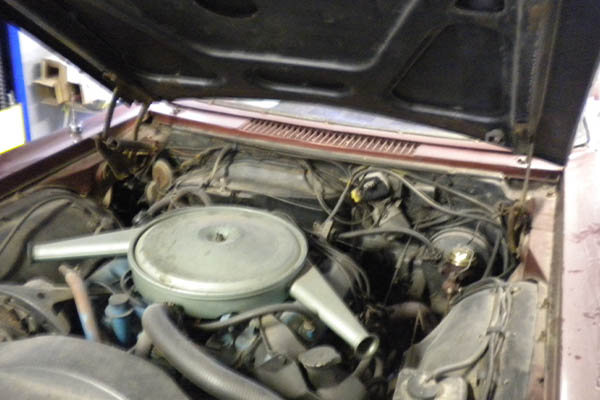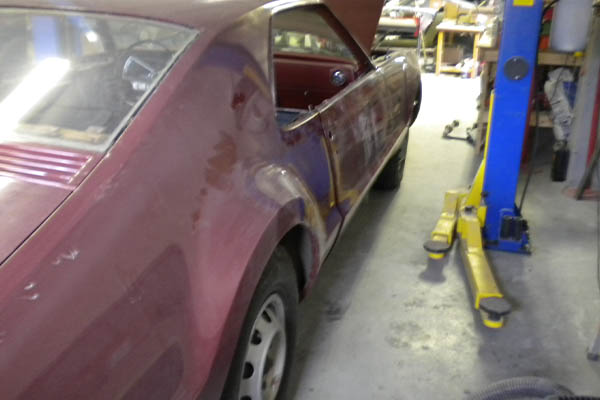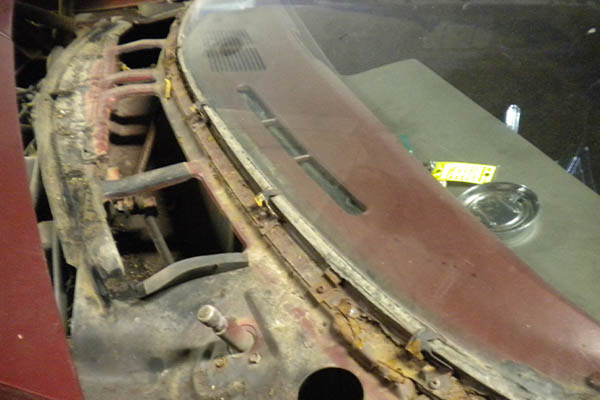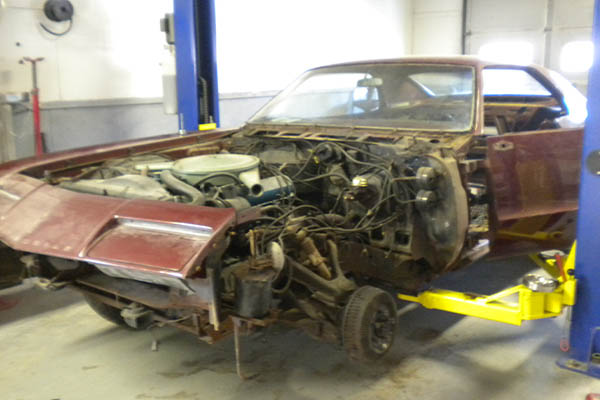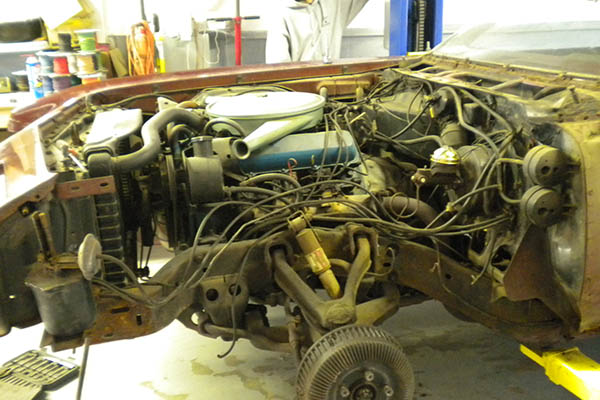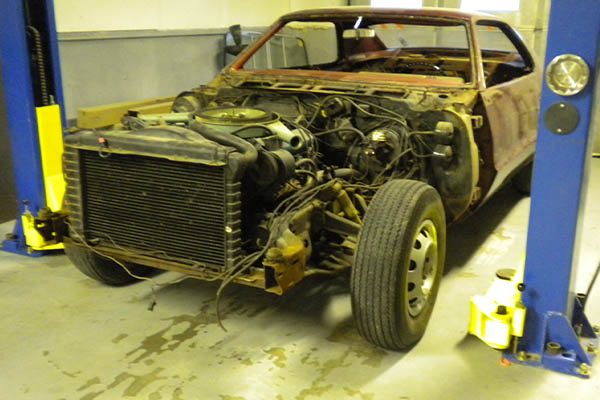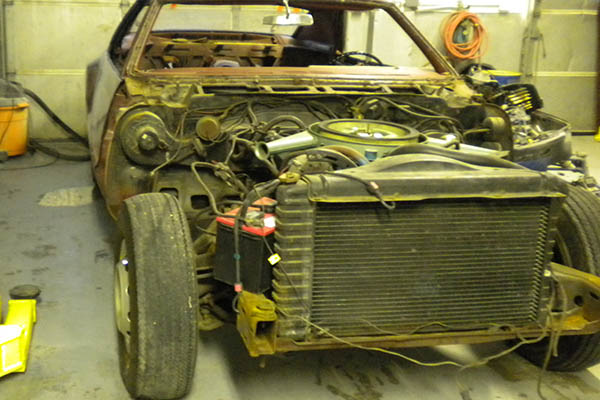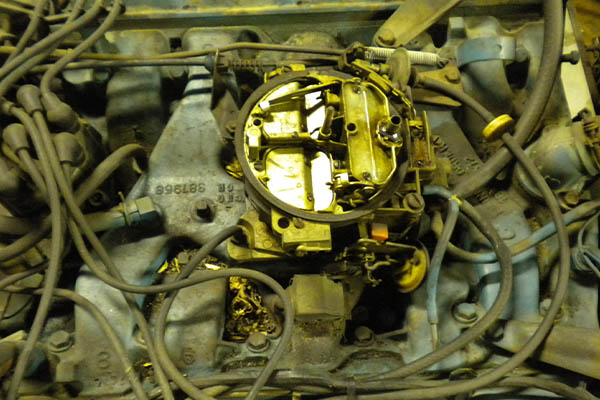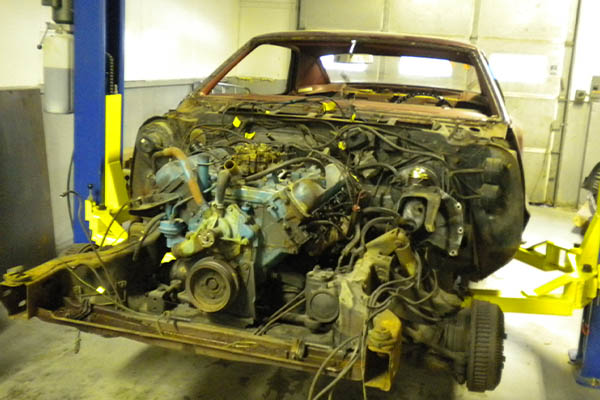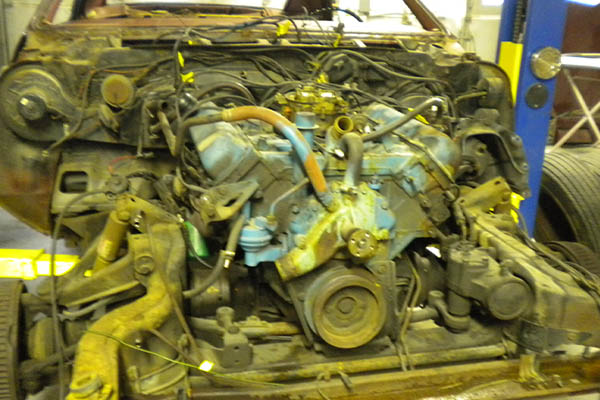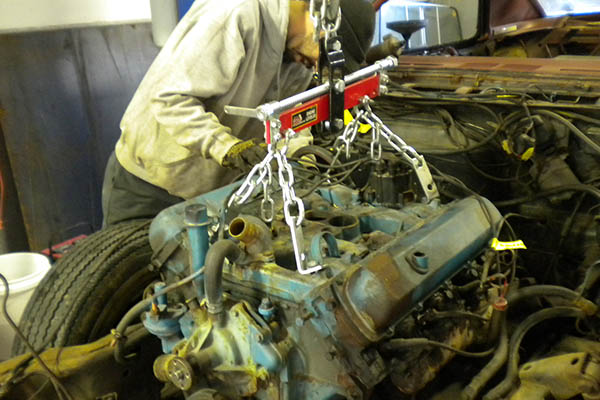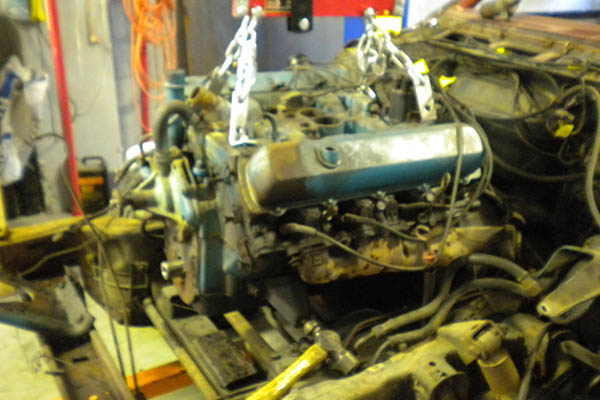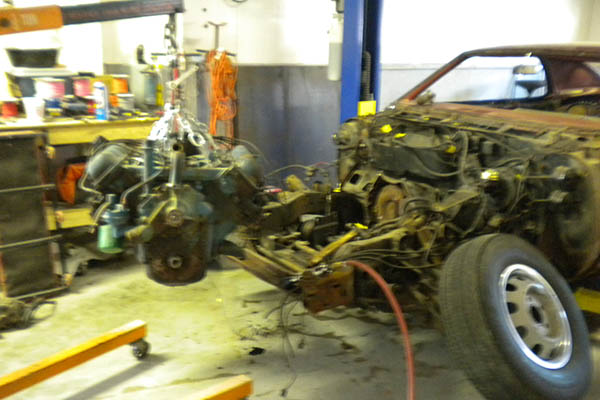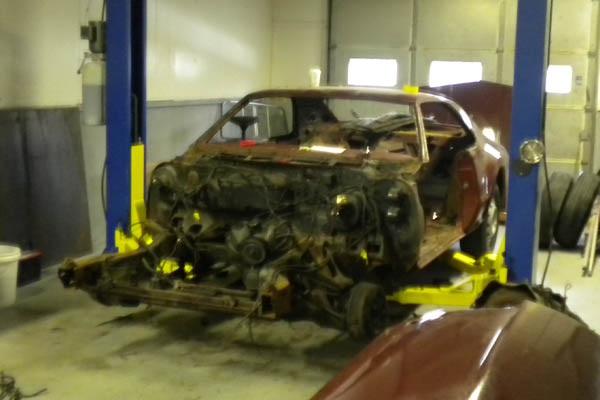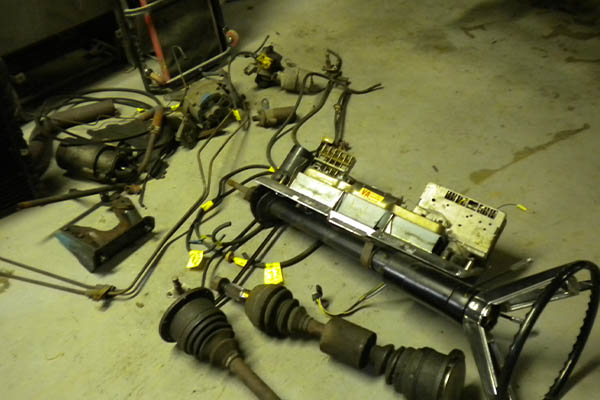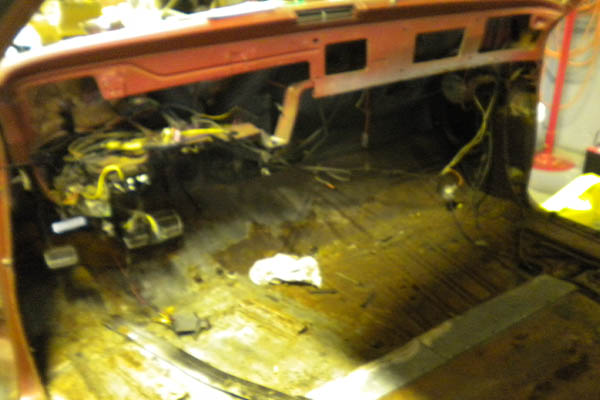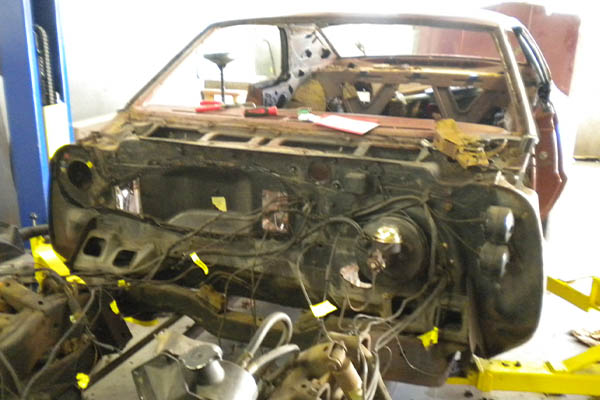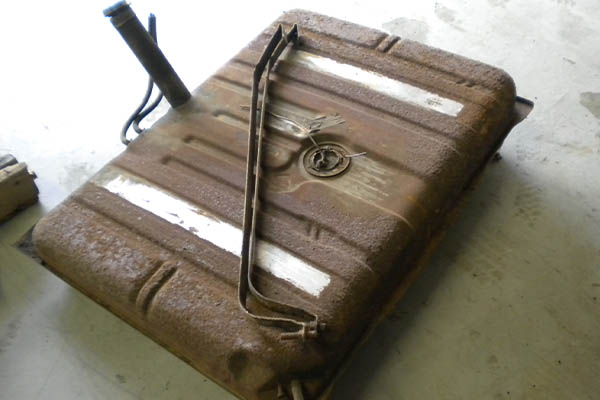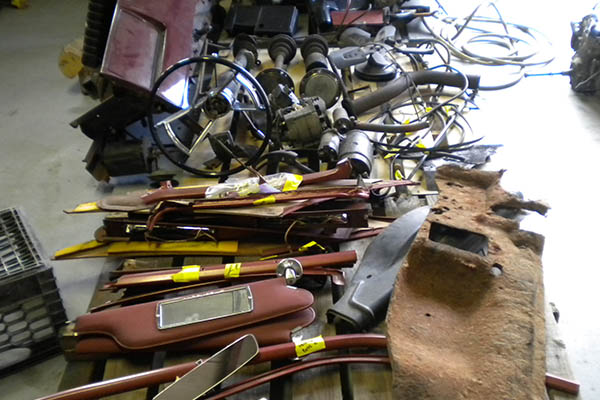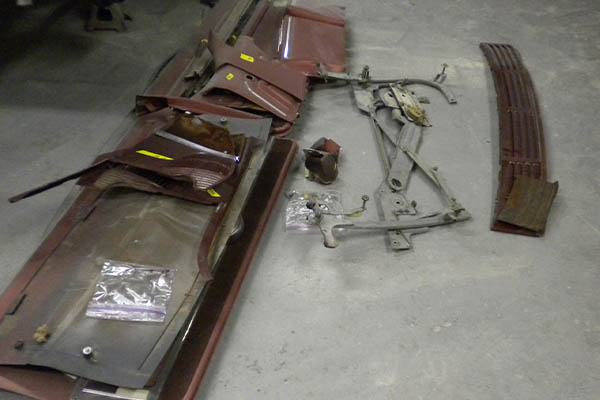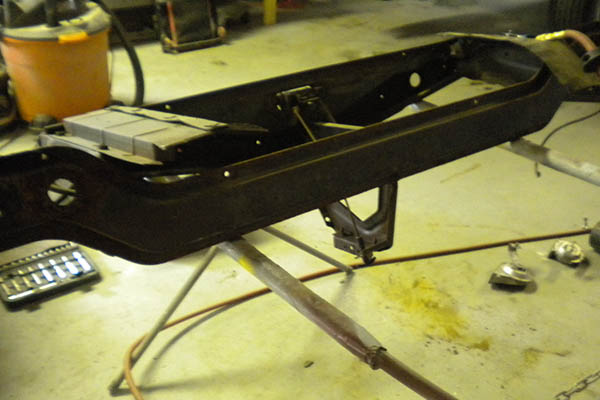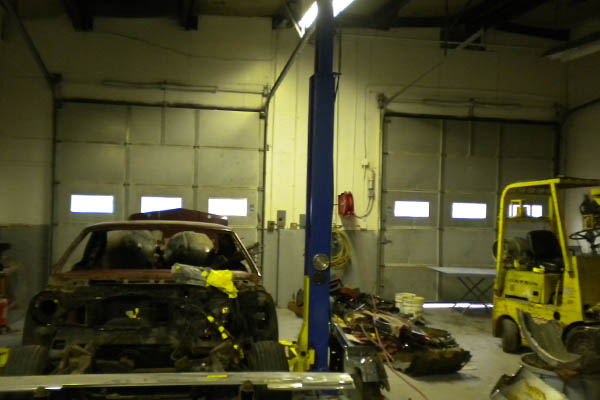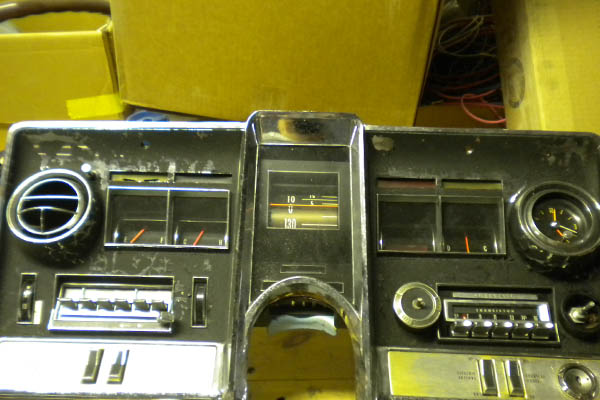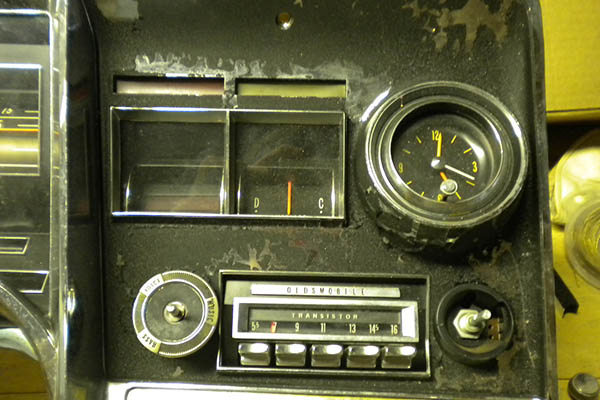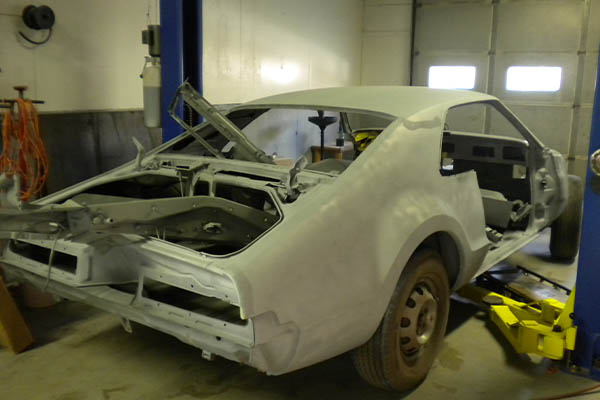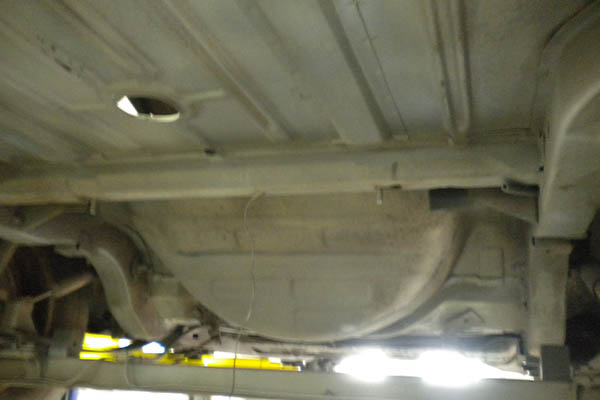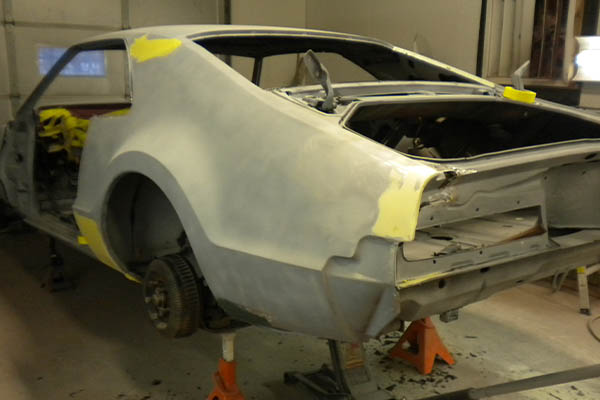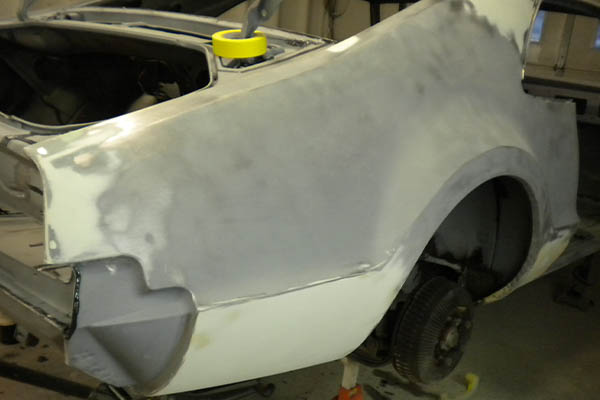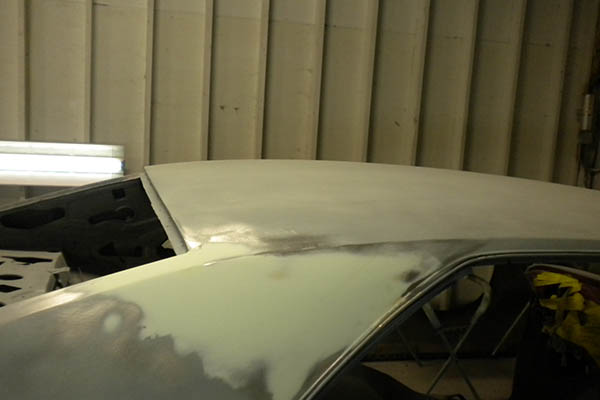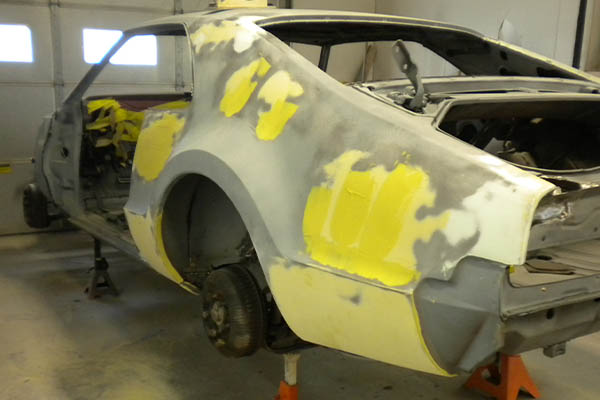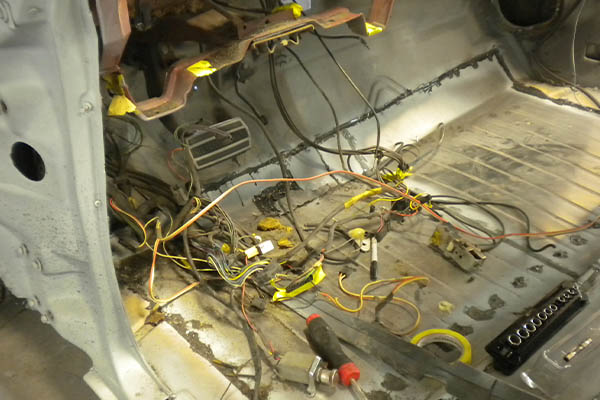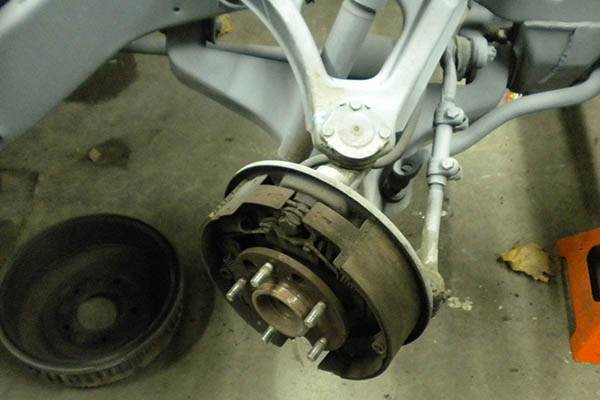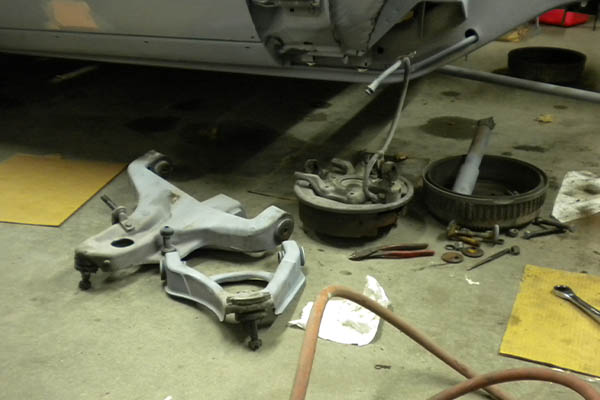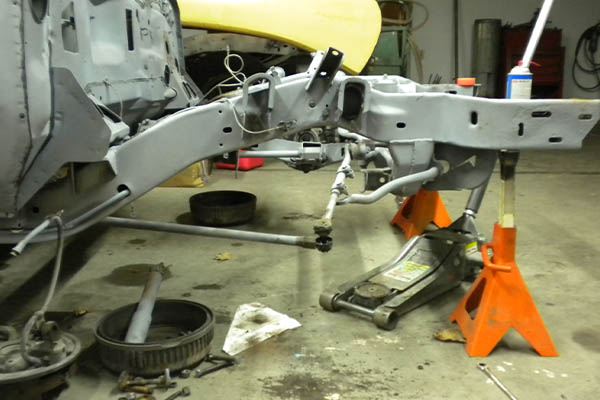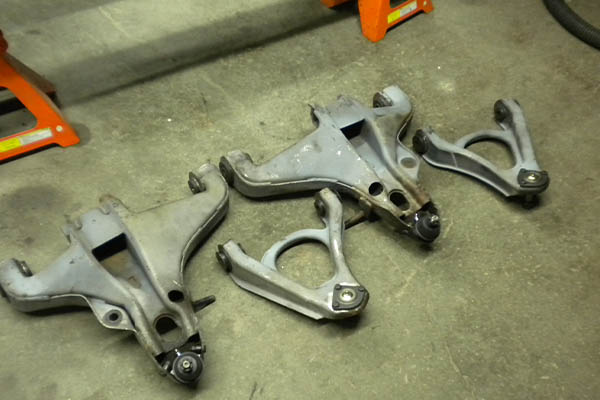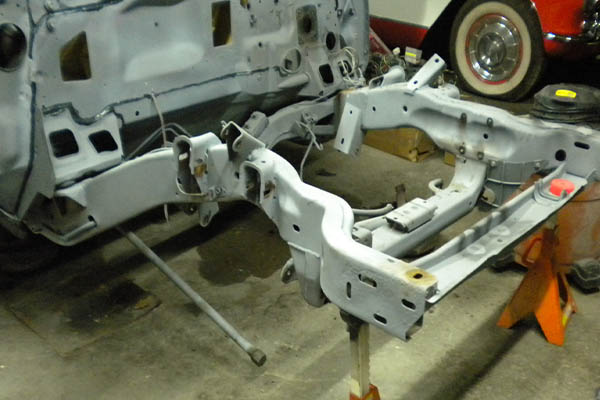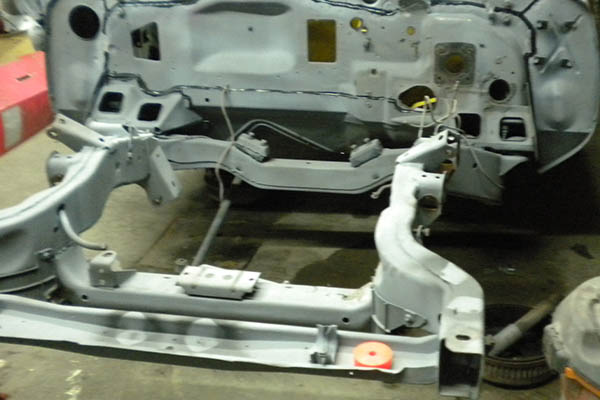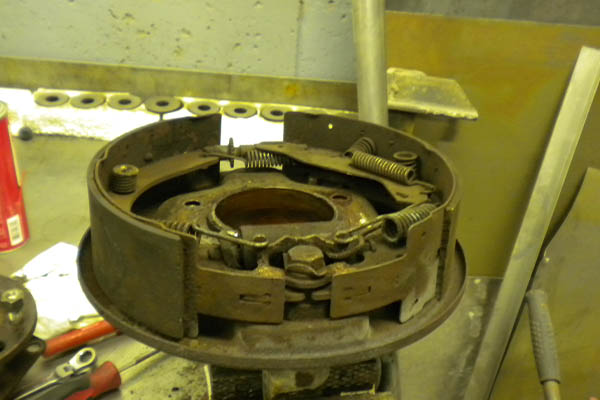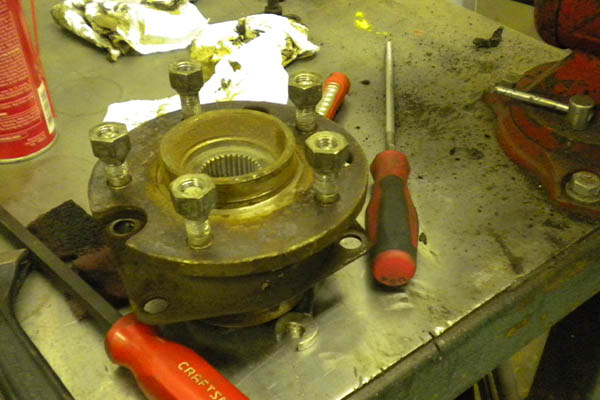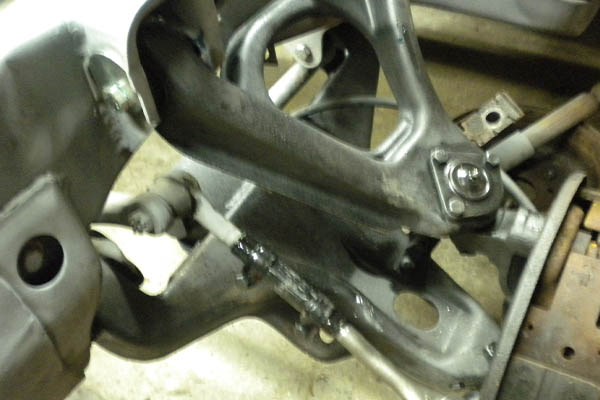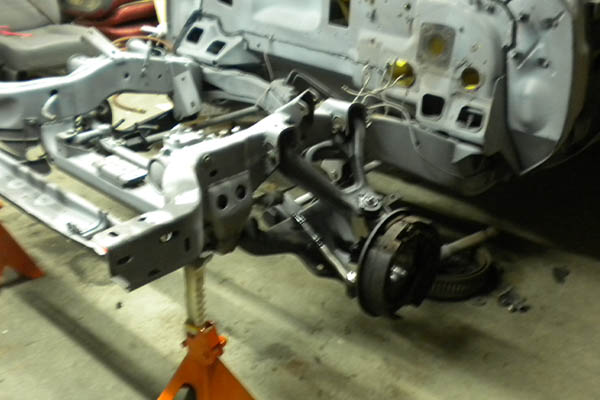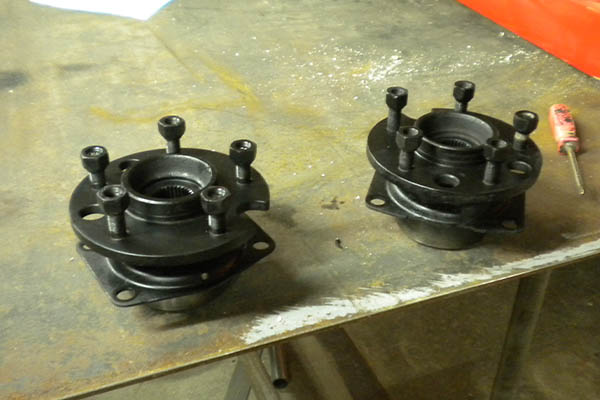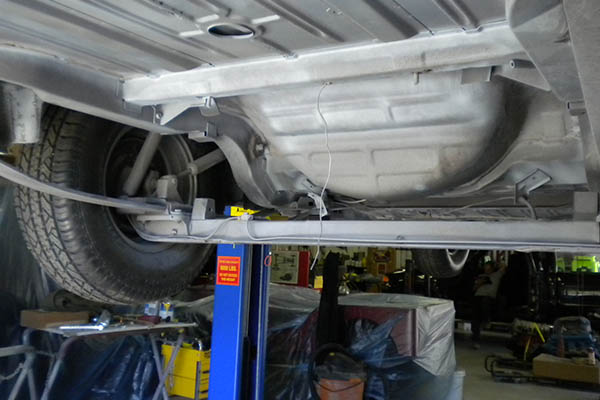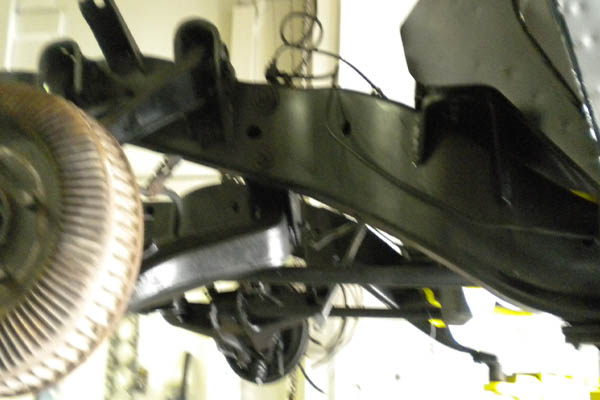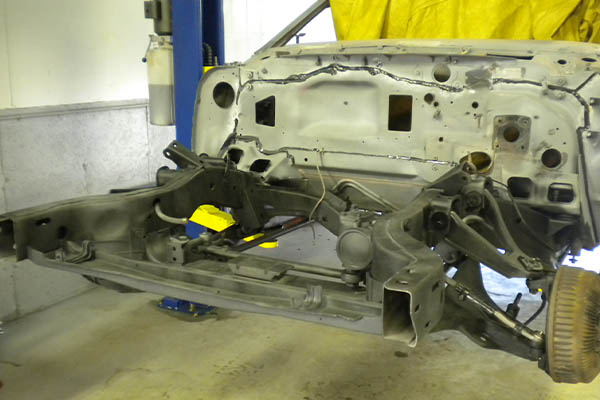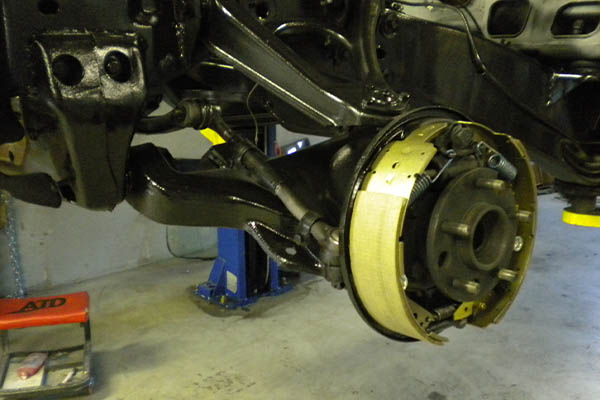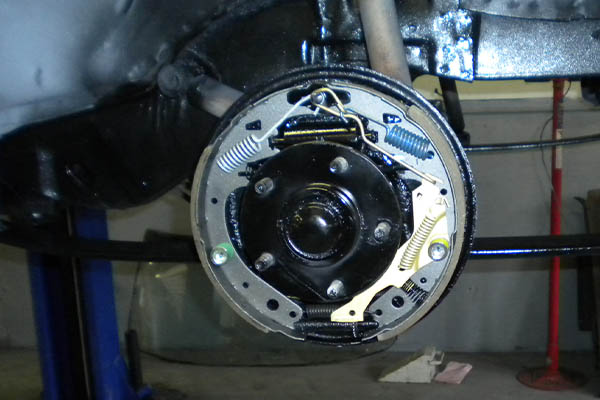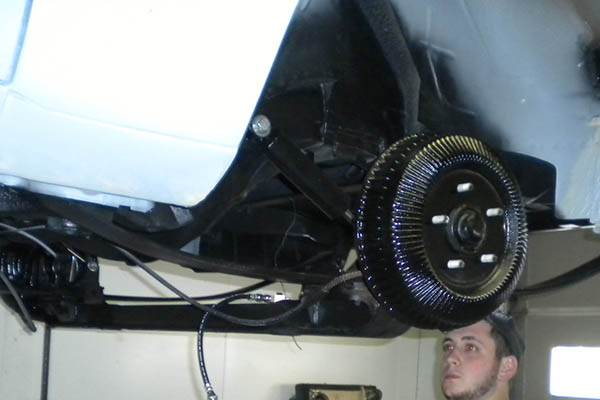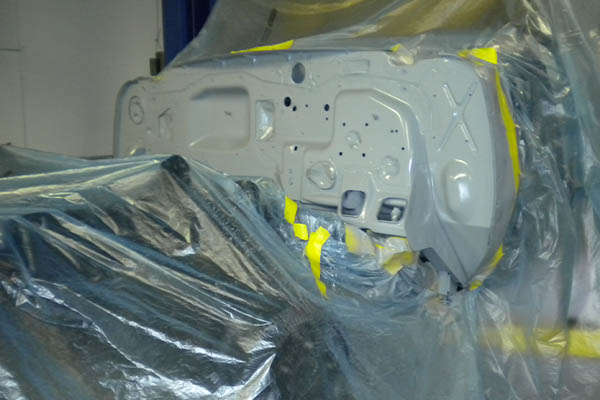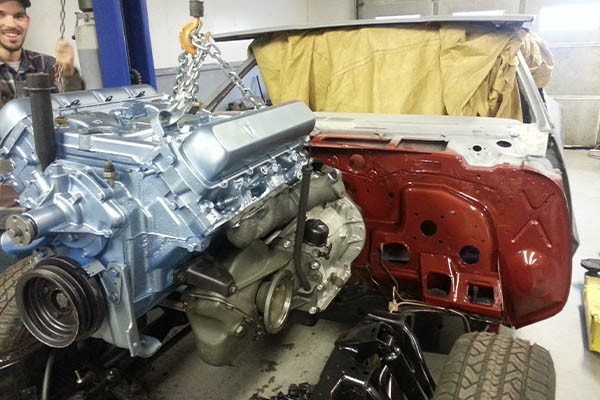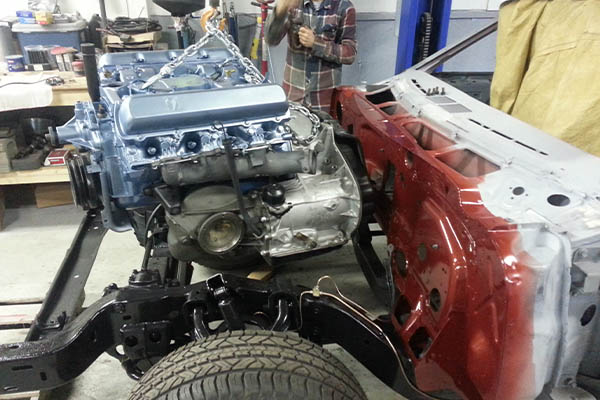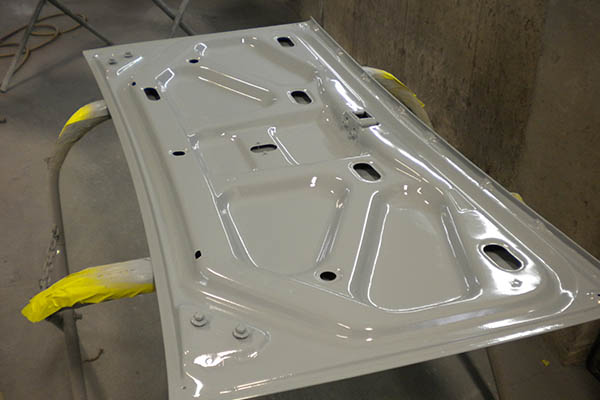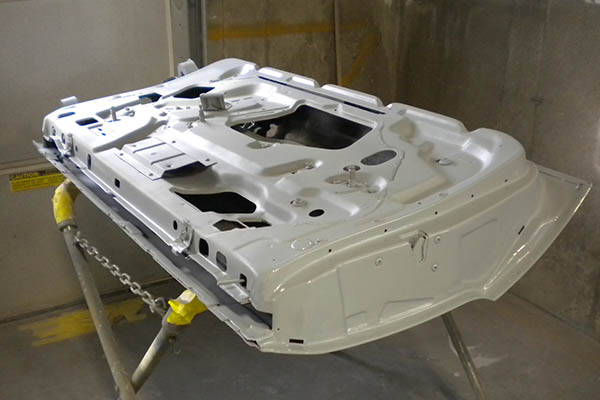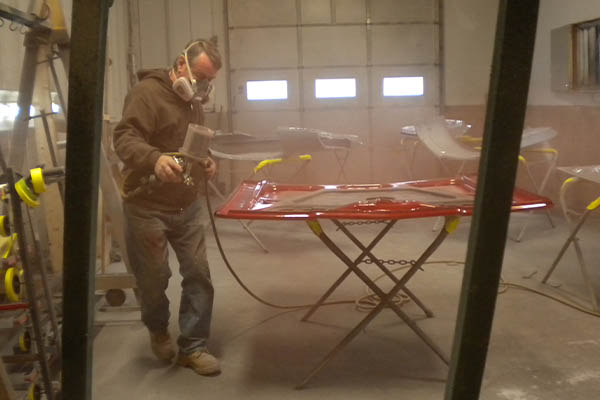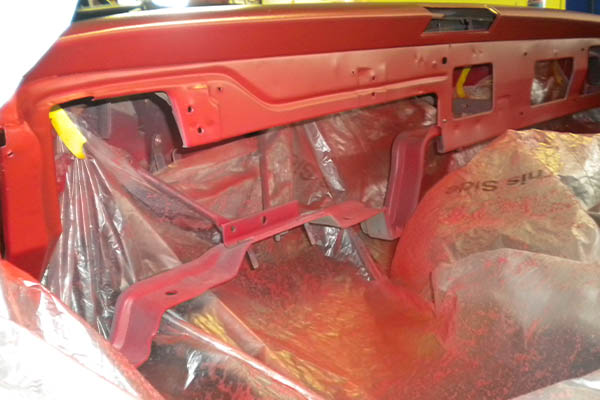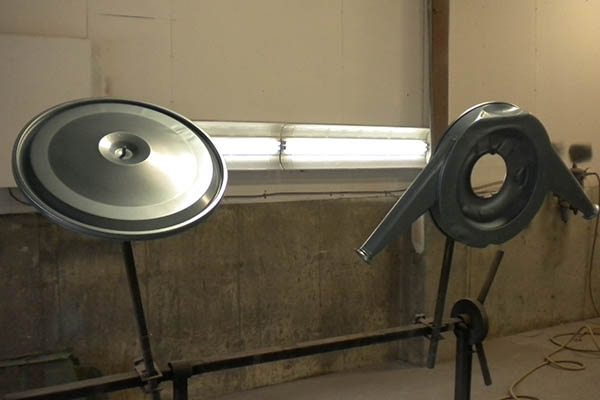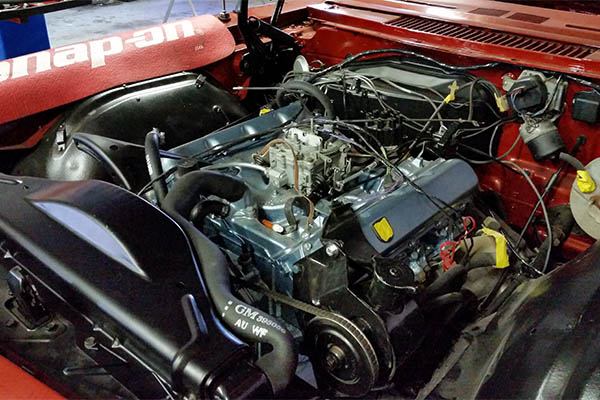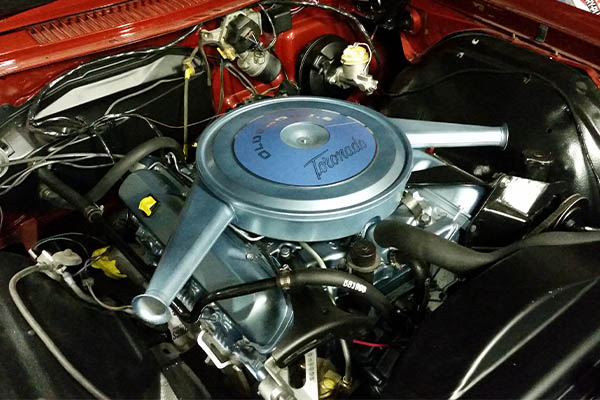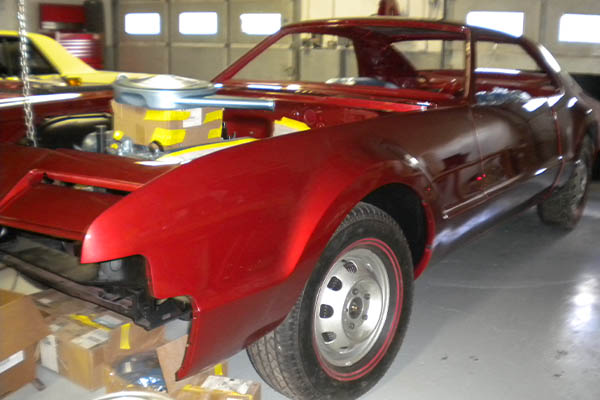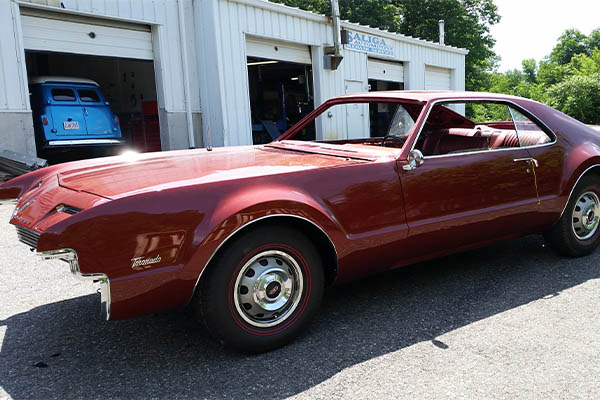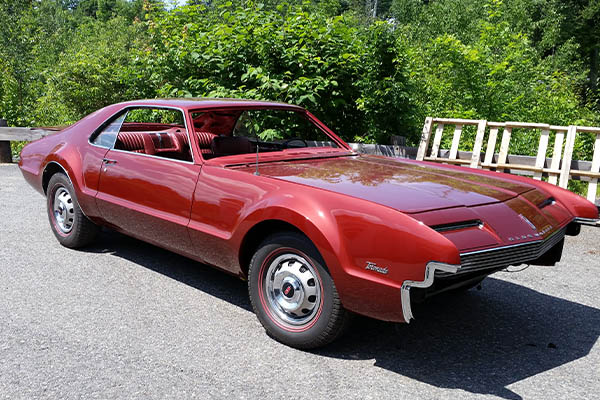
The story of the Oldsmobile Toronado actually starts with the major inspiration for its design which came from the Cord Automobile Company (circa 1929-1937). The short-lived company was known for its breathtaking modern designs and outside the box thinking, but most importantly its use of front wheel drive as opposed to traditional (at the time) rear wheel drive. The concept of front wheel drive was more common in Europe at the time, but here in America it was far from the norm. So much so that Firestone would develop the Toronado Front Drive “TFD” tire specifically for the car. In fact, after Cord’s demise in 1937 America would be free of domestic made front wheel drive cars until the introduction of the Toronado in 1966. The Toronado would use similarly styled wheels, vacuum-operated hide away headlights, a Cord “coffin nose” inspired grill, and of course front wheel drive to pay homage to the pioneering auto maker.
Despite seeming to be an entirely one-off design, when it came to the drive train GM sourced a 385 horsepower 425 cubic inch V8 from its other rear wheel drive cars then modified their rear wheel drive Turbo Hydramatic 400 transmission into the TH425 by basically splitting the 400 in half, adding a heavy duty chain and sending the power back towards the front. The design would prove to be extremely strong and would even go into many full-sized motor homes throughout the 1970’s and even the 200 mile per hour twin turbo Vector W8 super car (circa 1990-1993). The Toronado, despite being marketed as a luxury car, would have the classic sports car shape of a long hood, short trunk and low height. However, it would have similar performance numbers to other luxury cars of the day taking about nine to ten seconds to hit sixty miles per hour and weighing in at 4,500 pounds. The Oldsmobile’s first year of production in 1966 was a huge success with about forty one thousand units sold and being named the car of the year, but it would be a short victory as sales for the next year would be half of that. It was said that everyone who wanted this uniquely styled car had “already bought one” which attributed to its slumped sales. However, the model would last for an impressive twenty six years and go through four major redesigns.
This first year 1966 model is a “Deluxe” package costing around 6,000 dollars new and features “Autumn Bronze” paint, one of the bolder colors offered. The restoration would be a straight forward back to showroom new project. Though sharing the GME body set up of the Buick Riviera and Cadillac Eldorado, parts for the body of the Toronado would be very hard to come by. The car featured here had little rust or rot for its age, so patch panels were fabricated where needed, the front half of the floors were replaced and then the car was readied for body work. The motor and transmission would be overhauled and repainted in Oldsmobile’s blue engine paint as they once were. The same would be true for the interior upholstery which was redone in a matching bronze color scheme. While painting the exterior of the car, the mostly steel dashboard would also be repainted to match. The Toronado’s interior was very minimalistic compared to the competitors like the Thunderbird, Charger, or AMC Marlin, but did so on purpose by placing unique and interesting designs out in the open. The perfect example of this is the car’s rolling barrel style speedometer or large paddle style dual door handles so that passengers in the backseat could open the doors to get out without relying on the driver. The Toronado would also have no rotating glass window vents by using clever engineering to pull air through the cabin, back down under the rear seat and finally out the rear deck lid. Overall, the car was designed to be an engineering masterpiece way ahead of its time so restoring it back it original was an easy choice.

